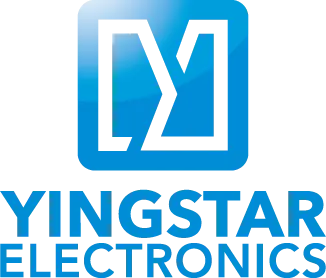A circuit board before the electronic components are assembled is called a printed circuit board (PCB). The process of brushing solder paste onto a printed circuit board (PCB) and assembling the various components, including integrated circuits, resistors, and capacitors, is called PCB assembly (PCBA).
Here is a step-by-step guide for the PCB assembly process
PCB assembly process step 1: Apply Solder to the PCB
Using mechanical equipment, a stainless steel stencil made of thin material is applied across the board. On the board, the solder paste should be applied evenly where it is needed.
PCB assembly process step 2: Automatically place SMT assembly components by using a pick-and-place machine
SMT assembly robotic equipment should be used to attach SMD or surface mount components to the prepared PCB. Next, the components must be mounted on the surface of the board.

PCB assembly process step 3: Let the Solder Paste Solidify – Reflow Soldering
During the reflow soldering process, the PCB and components are placed on a conveyor belt. The PCBs and other components then move on this conveyor belt into large ovens at 250°C, solder paste will melt at this temperature. The components are then secured to the PCB and joints are formed by molten solder. The PCB enters the cooler after high-temperature treatment. The solder connections are then solidified under the control of these coolers. SMT assembly components and PCB will thus be permanently connected.
NOTE: When integrated into a conveyor, solder paste applicators, pick and place equipment, high-speed chip emitters, and infrared ovens, one automated SMT assembly production line can apply solder, pick and place, and solder at least 50,000 SMD components in one hour.
PCB assembly process step 4: SMD/ SMT PCB Assembly Inspection
PCB inspection is performed after the reflow process is complete and the mounted components are soldered in place. The built board must be functionally tested and inspected. There are various ways to validate PCBAs for quality control.
Manual Inspection: Technicians will physically inspect each PCBA to verify quality.
Automated Optical Inspection: An inspection technique more suitable for larger batches of PCBAs. Automated optical inspection equipment (AOI equipment) uses high-performance cameras positioned at different angles to observe SMT assembly solder connections.
X-ray Inspection: An inspection used on more complex PCBs, including QFN chips, BGA chips, and other tiny pitch chips, to examine layers and find potential problems.
PCB assembly process step 5: Insert through holes Components
PCB holes that are plated through the board are called plated through holes or PTH components. For PTH, more sophisticated soldering techniques are required instead of solder paste.
The traditional method is manual through-hole insertion, which is called manual soldering.
Wave soldering is an automated variation of manual soldering in which molten solder is applied in waves to the bottom holes of all circuit boards at once. This is highly efficient and economical for big-batch production.

PCB assembly process step 6: Final Inspection and Functional Test
After the PCB board assembly is assembled and soldered, final inspection and functional testing are required. Run simulated signals and power supplies to test the electrical characteristics of the PCB. If the PCB exhibits electrical signal fluctuations while testing, the PCB fails. If the final inspection fails, the PCB should be diagnosed and repaired.
PCB assembly process step 7: Final Cleaning, Arrangement and Shipping:
Once the PCBA has been tested and all cleaned, it’s time to wipe off unwanted residual flux, finger grime, and oil. All forms of dirt can be removed with a pressure washer made of stainless steel and deionized water. Deionized water will not damage PCB circuits and electronic parts. After cleaning, dry the PCBA with compressed air. The finished PCBA is now ready to be packaged and shipped.
If you want knowledgeable and skilled PCB assembly services, please try Yingstar.
If you have any questions about our method of producing PCBAs, please feel free to contact us.


